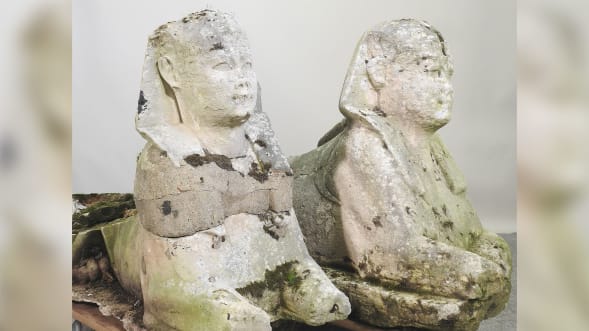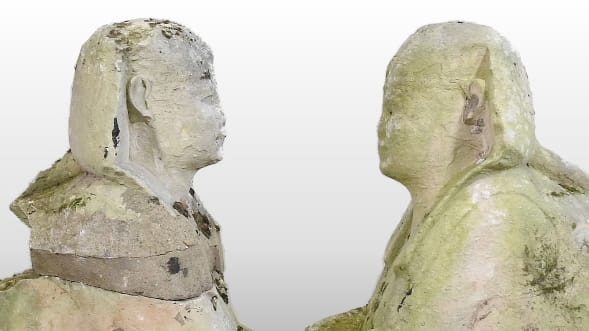Garden statues turn out to be ancient Egyptian relics, selling for $265,000
An auction company said that a pair of carved stone statues used as garden ornaments sold for more than £195,000 ($265,510) when it was discovered that they were ancient Egyptian artefacts going back thousands of years.
The artefacts were acquired from a garden in Sudbury, Suffolk, in eastern England.
Mander Auctioneers, which handled the sale, said they were contacted by a family looking to get rid of items from their old house before moving home.

The “heavily weathered” statues, which had been used to decorate a garden patio until last month, had been bought for “a few hundred pounds” at another auction 15 years ago and were believed to be 18th-century replicas of ancient Egyptian relics, according to the auction house.
One statue even had its head re-attached with cement by a local builder under the instruction of the previous owners, auctioneer James Mander told CNN Tuesday.
“We didn’t really question them and put them in [at auction] at £300 to £500 ($410 to $680),” Mander told CNN. “And then the auction just went crazy,” he said.
The world’s most expensive sculptures to sell at auction, from an ancient lioness to a stainless steel rabbit
Saturday’s bidding began at £200, but within 15 minutes four telephone bidders and numerous internet buyers pushed the final price up to £195,000 plus 24% buyer’s premium, with an international art gallery making the final sale.
“Opinion was that they were genuine ancient Egyptian examples, which had somehow passed through recent history as 18th-century copies,” auctioneers said in a statement.

Mander said that, in the 18th century, the Grand Tour saw English people travel through Europe, buying items.
“And we’ve just presumed they were 18th century Grand Tour items,” Mander told CNN.
‘Tomb raiders’: The pandemic is making it easier than ever to loot ancient Roman treasures
“As it turns out they’re thousands of years old and genuine. So it’s quite amazing really,” he said, adding that news of the final sale was “beyond comprehension” for the surprised previous owners.
Mander said that work was being done to trace the provenance of the statues, and he can’t place an exact date on the artefacts yet.
“I wonder where they’ve been for the last 5,000 years. It’s quite incredible, really,” he said.





